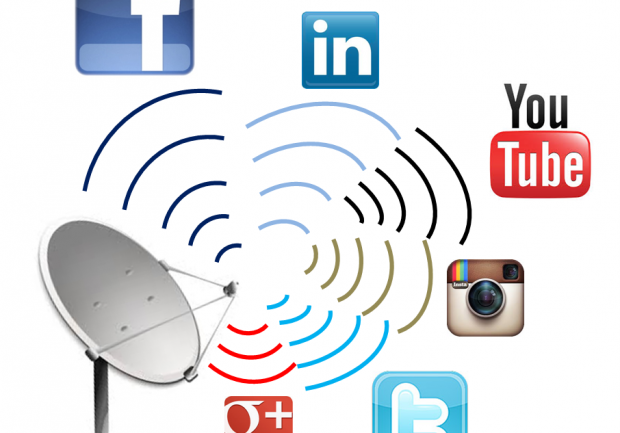This article first appeared in the Sept 2013 Issue of Sound & Communications Magazine.
Not too long ago, I was a social media Luddite. I refused to take part in any kind of social media. I read all the stories about the lack of privacy that came from signing up for the various services and I was not one to toot my own horn, wanting my achievements to be recognized by others without my having to broadcast them to the world. My description of social media at that time was a way to brag about your accomplishments and post a gigantic digital billboard about yourself.
I preferred the old-school business methods where you establish a relationship with a customer or partner by continually providing information and services that make you an invaluable resource to them. A little over two years ago, I was invited to participate in a monthly AV community forum called #AVChat that allowed people on Twitter to discuss the goings on of the industry. It was after participating in a few of these chat sessions that I finally saw that social media could be used for so much more beyond the narrow view that I had formed.
What I discovered was that social media is nothing more than an open conversation with the world at large. Anyone can jump in to the dialog and offer their opinion, experiences, advice or any other part of themselves. This was a way to let anyone who wanted more education learn from the experiences and stories I had to share and get more information on the services I have to offer, while giving me the same chance to learn from others.
That is how I got involved in social media. After joining a very successful integrator earlier this year and examining how it communicates with its customers, I found that, although word of mouth is invaluable, social media can be an important tool in creating that initial opening for current businesses to continue to grow. Social media is a global forum that affords the opportunity to open up lines of communication to just about anyone.
You can use the medium to reach out to your manufacturers to share what you think of their products and how they are used, and typically get a response. The majority of your customers are communicating online; why not look into what they are doing and see what information or needs they are broadcasting to the world? Perhaps they will talk about how they have been given approval for an expansion, which gives you a perfect opportunity to share how your services can help them when the time is right.
When I first started using social media, I found that it was the most effective personalized news feed I had ever seen. Throughout the course of the day, I had the opportunity read hundreds of messages that would provide links to articles, tips about better practices and pictures or videos sharing information about any topic I wanted to track that day. But it was up to me as to where I wanted to invest my time and attention for this information. Over time, I found that there are a lot of other individuals who thought like I did about the industry, and this became an environment for us to share ideas. I also discovered that this is a way to for me to get information about related fields so I could better communicate to their needs if the topic came up in my next client meeting.
There are nearly 200,000 people on Twitter who currently call themselves some sort of social media expert. I will tell you right now, I am not counted among that group. I view social media as an open dialogue. I also foresee that how you use it will be ever changing. There is no one single way to use social media to be successful; it all depends on how you want to put it to use for your company.
The best comparison I can offer is that using social media is much like choosing your advertising campaign: You have to determine the image and message that you want your company to broadcast. There are, however, two things to avoid doing to make sure you have a successful social media campaign for your business. The first: Do not use social media as a newsletter blast service. All successful social media campaigns involve a certain amount of interaction. The first word in the phrase is social; if you’re not being interactive by reaching out and responding to others, then those who follow you will become less interested in what you have to say.
The second is very much related: You have to give something of yourself in your broadcasts. You can emphasize your working life and practices so that what you’re sharing will entice potential customers with informational content, but don’t make your work the whole of who you are on social media. Some of the best business relationships you have probably exist because there is a personal component, be it a shared fandom of a sports team, a hobby or simply being alumni of the same institutions. Use that same information to show the company culture and allow potential customers to feel like they know something about you beyond what products and services you can offer them.
The AV industry is becoming more and more commoditized with each passing year. With the products we offer (displays, speakers, amplifiers, etc.) being a part of most people’s everyday lives, they don’t necessarily understand how what we do as an industry differs from what a place like Best Buy can offer them. Through the personal interactions, technical advice, demonstrations and writings that can be created and shared across social media, you can set yourself apart from your competitors and help any potential customer understand why what you do as an AV professional is important to them.
Just like personal interactions, this is about building trust in what you can do to help your customers. Only now, you can reach out to them before they have even picked up the phone to call you. Using social media can effectively be a progressive way to reach beyond traditional word of mouth leads for you to spread the word about your company and all that it is capable of providing.




